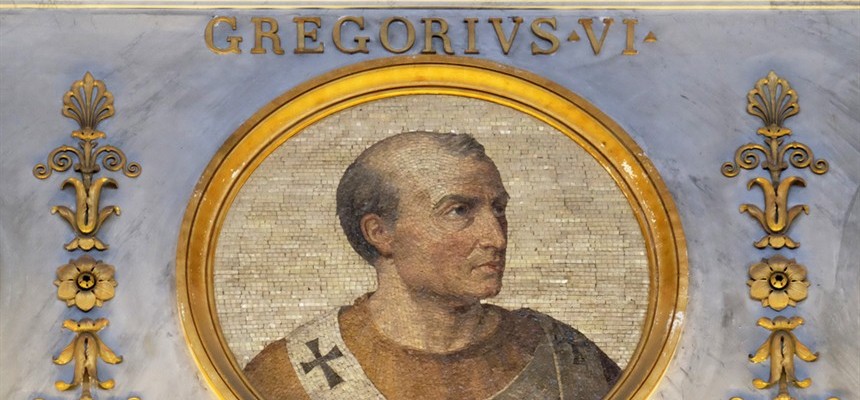
Giovanni Graziano, in English, John Gratian, was born in the late 900s, in Rome Italy. It is probably a sure thing that his family was well established, since he became the godfather of the child of the very wealthy Tusculum family. About the same time, he was appointed cardinal of the Roman Catholic Church. For many years, John was archpriest of the church of St. John by the Latin Gate, the equivalent of the current term, “vicar”. He was known as a moral man, upright of character.
His problem was his godson. The child grew into an entitled, spoiled young man. The boy’s father, the brother of two deceased popes, arranged to have Theophylact elected pope when he was only in his early 20s. He did not want the position as Pope Benedict IX and lived a decadent lifestyle in the papal palace, complaining to his godfather how this was not the life for him. He wanted to marry.
Gratian was willing to do anything to stop this embarrassing scandal of the papacy. So, when Benedict asked him if he could abdicate, Gratian asked the Church council if that was possible. The answer was yes. Gratian and Pope Benedict negotiated. Benedict wanted the money his father had spent on the election reimbursed to him. And the papacy rolled over to Gratian after payment.
On 1 May 1045, Cardinal Gratian became Pope Gregory VI. Many were happy with the ease with which Benedict left. However, Benedict had left once before and there was another man, Sylvester III, who had been consecrated Pope some years back. He had gone back to his see until now. Sylvester’s political backers still had a hold on parts of Rome and they were determined to have their man back on the throne of Peter. In the meantime, Benedict had been rejected by his intended and he rode back to town asking for his throne back. He, too, had political allies who wanted their man back.
Gratian was not a rich man. He took the payment out of the papal coffers, leaving them practically empty. He also faced a dilemma. The “good” priests and bishops were not very righteous. Gregory tried to get civil and religious order established using letters and councils. The rival factions were too strong. The chaos reigned. The pious Hildebrand, Gregory’s confidant and chaplain, helped in this effort.
Now there were three popes all claiming the position. A third rival group formed, composed of influential clergy and laity. They called on King Henry of Germany to intervene. He was scheduled to come to Rome to be crowned emperor, for only a pope could crown an emperor. Henry rode south in the fall of 1046. Gregory headed north to meet him, strongly convinced that he was innocent. The Pope was received with all honors by the king and his entourage. Sylvester also joined them at Sutri for a council on 20 December. Sylvester was quickly dismissed. And Gregory was accused of simony despite his good intentions. Both were no longer considered popes.
Henry continued on his way to Rome where he met Benedict. The young man was banished to a monastery for life. Suidger von Morsleben, Bishop of Bamberg, was elected the new Pope in short order. He then consecrated Henry and his wife as emperor and empress. When the snows had cleared from the passages through the Alps, Henry and his entourage took Gregory and his faithful Hildebrand back to Germany, where Gregory died a year or two later.
Hildebrand eventually returned as Pope, himself, taking the name Gregory VII to show that he saw Gratian as a true Pope.

Recent Comments